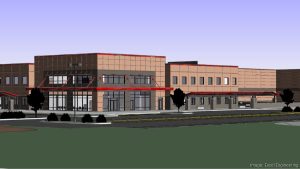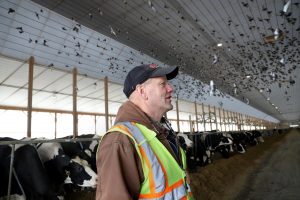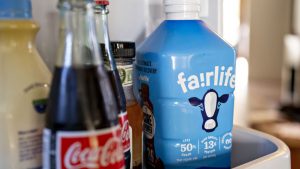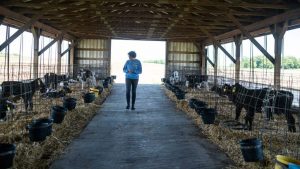
High-yielding cows eat a lot of roughage, and their rumination is much more active than with low-yielding cows. The rumination process, by billions of microorganisms, leads to a lot of excess heat from the process. It is this heat the cows need to get rid of and if the outside temperature is high, it is more difficult for those cows than if the outside temperature was low.
Communicating cows
But when should you start to cool your cows? There are many methods and digital solutions available that can tell when you need to start the fans or when to wet the cows. But in Africa, where farmers do not have the technology many other dairy farmers have, what do you do? I tell them to “communicate with their animals” meaning, see how the animals react and what signals they show in their behaviour.
Even though the cows cannot talk, they can easily communicate how they feel to farmers. Manure consistency is a classic sign that we recommend farmers use to evaluate if the digestion of the cows is working properly. Body condition score is another method we use to evaluate if the feeding and caretaking of the herd is done in the right way. Limping score we use to evaluate if the hoof health and environment of the cows is good, etc. We have many ways to monitor the animals and use those signals we get back to tell us what is going on.
Heat stress and cow cooling
But what signals should we look for regarding heat stress in cows? A sure sign is to check for panting, normal respiratory rate for cows is up to about 30 breaths per minute. If they are doing much more, it is likely they are not feeling good. This is quite an obvious response from the cow to the heat.
But there are many other and more subtle responses like when cows or youngstock seek shade under trees or wherever they can find shade. This is a clear sign that they are trying to avoid the sun. When the impact is bigger, we also see drop in yield by a few kg and the long-term affect is also worse fertility in the herd.
Most of this can be fixed with the right installation of cow cooling solutions like with different type of fans, wetting systems, misting systems or other known methods. In Africa this ‘luxury’ of always having access to electricity or even running water, poses the question – then what to do? Well…
Cow breed
How to solve this issue if you do not have electricity? Until now many dairy farmers in Africa have ‘solved’ the issue by using breeds that are low yielding so the excessive energy from the rumination is not that much of a problem for the cow to get rid of. But if the farmer is using a breed that gives over 20 kg of milk per day, the situation is certainly different and these cows would definitely benefit from some form of cow cooling. Here, the main solution is shade so that the cows do not stand in direct sunlight.
Secondly by allowing water to run over the cows, the evaporation of it from the skin will help the cow to get rid of some of the excess heat. The animals also need to have good access to water but often, because they are not an ideal temperature, they simply drink and drink because that makes them feel good, but this does not really solve the heat stress issue.
Therefore, quite often, when a dairy farmer has cows producing over 20 kg of milk per day, they need to invest in fans, which requires some form of electricity. Today, low energy fans can be bought, which are somewhat helpful but run on 12 volts so most farmers can use these solutions with a simple solar panel charging station and a car battery.
The solutions do not always have to be complicated!

























